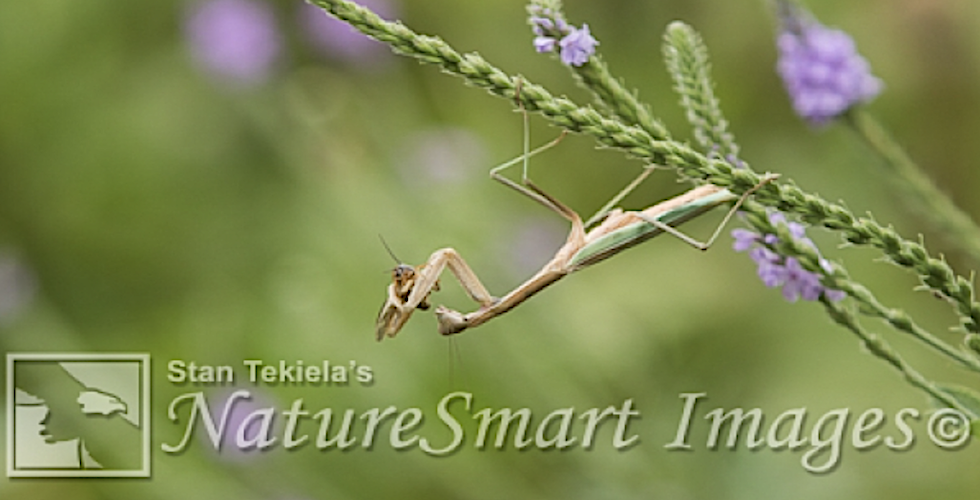
A Closer Look at the Praying Mantis
Naturalist and wildlife photographer Stan Tekiela finds that some of the most amazing animals on the face of the earth are the insects. Today he introduces us to the Praying Mantis.
He recently spent some time capturing a few incredible images of the Praying Mantis, who is often just called Mantid. Here is his report.
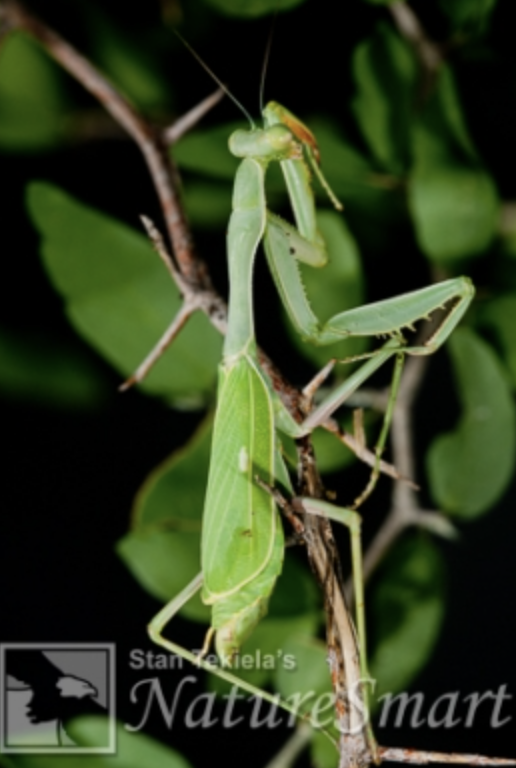
The Mantids are such cool critters. They can be found worldwide in temperate and tropical regions. Believe it or not, there are over 2,400 different kinds or species of Mantids in the world. They range in size and shape, with some looking rather plain and so tiny they could perch on the tip of your finger, while others are fabulously decorated and look like leaves or orchid flowers and can be upwards of 4 inches long.
No matter what they look like, all of the Mantids share some similar features. They have large, triangular heads with two huge bulging compound eyes. In addition, they have three smaller simple eyes located between the compound eyes. They have very flexible necks that allow the head to swivel and turn to just about any angle, and they have two long antennae on the top of their head.
Mantids have stereoscopic vision provided by the large compound eyes. They have a central focusing spot located inside the eye that allows them to produce high resolution vision to help them see prey. What I find the most amazing is a tiny dark spot in the eye that appears like a pupil that moves around. However, the dark spot is not a pupil and is therefore called a pseudopupil or fake pupil. The dark spot appears to move around the surface of the eye as the Mantid moves its head. The first time I saw this, it really threw me off. I could not understand how a compound eye, which is a collection of many smaller eyes (up to 1,000 tiny eyes) could have a pupil. However, the dark spot is simply the region of the compound eye that absorbs daylight, giving it the appearance of being dark, while the rest of the eye is reflecting light, giving it the appearance of being bright.
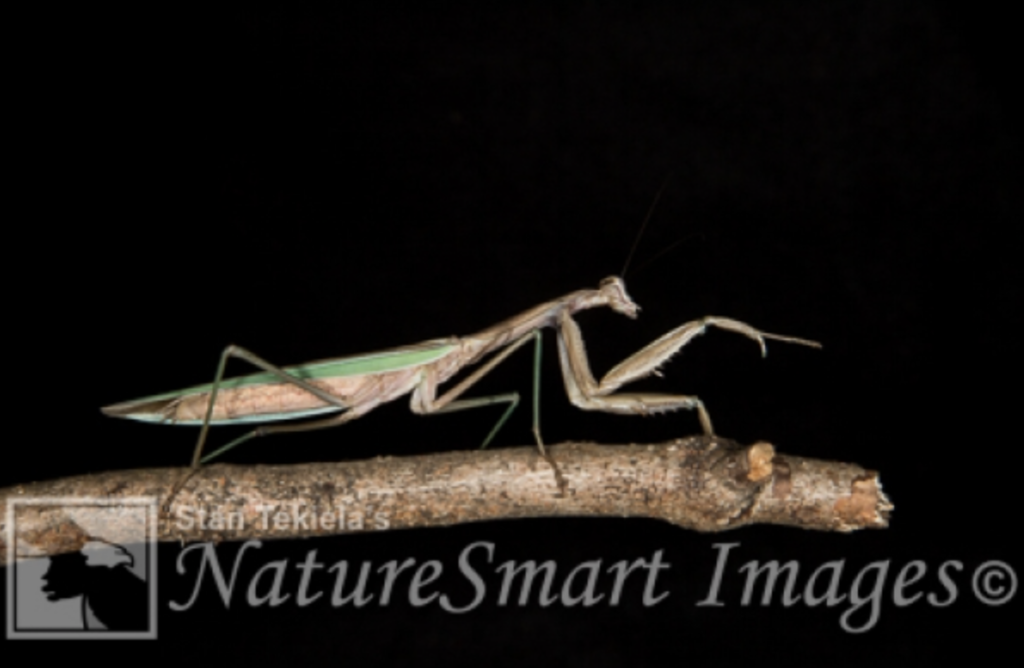
They also have large forelegs with forearms that fold up, so they appear to be praying, hence their common name. These specialized legs are called raptorial legs. The name raptorial means “adapted for seizing prey.” And that is exactly how these legs are used.
The large forelegs help Mantids capture and hold their prey. This feature alone sets this animal apart from all others. Mantids are ambush hunters. They perch on vegetation for hours at a time, using their huge eyes to spot any prey that wanders close. Using their coiled-up forelimbs, they quickly snatch up the hapless prey. They also have a series of very sizable spikes that stick out of their forelimbs and help hold the prey.
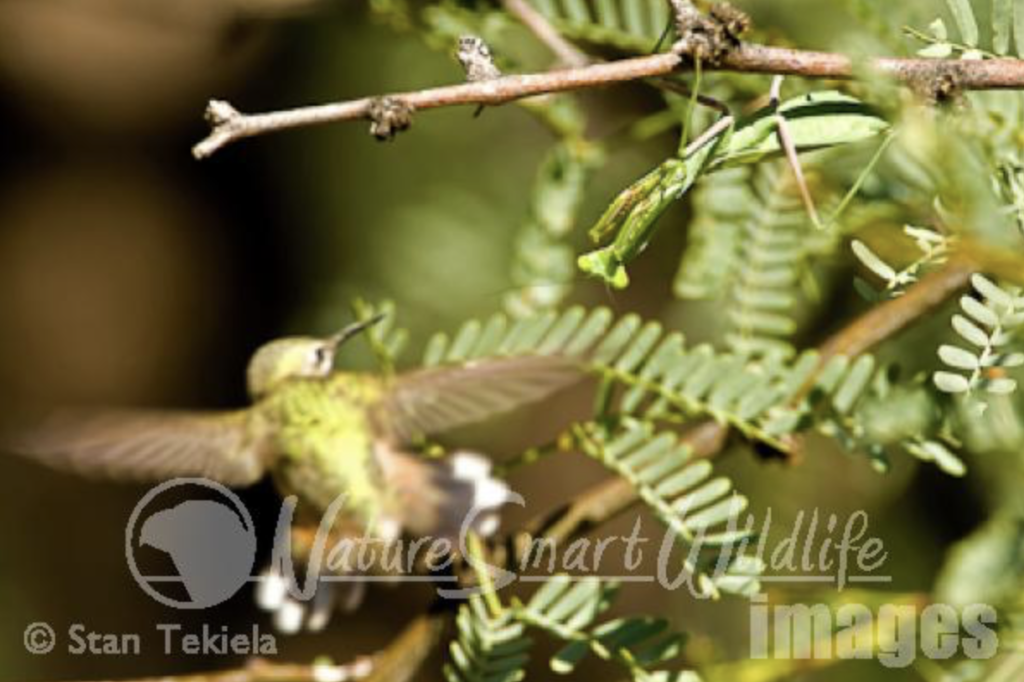
Another amazing feature of these cool critters is what they eat. The small Mantids eat mainly other small insects. However, the larger Mantids are well known for eating things as large as frogs, lizards, and even birds such as hummingbirds. I know it seems crazy, but I have seen it. More than 10 years ago, I was filming hummingbirds in Arizona and saw a Mantid hunting hummingbirds.
If sitting and waiting doesn’t work, then the Mantids will stalk around trying to get close enough to prey to grab them. When threatened, Mantids will stand tall with their legs apart and wings fanned out to look larger and more menacing. They will also strike with their forelegs. If all else fails, they will fly away.
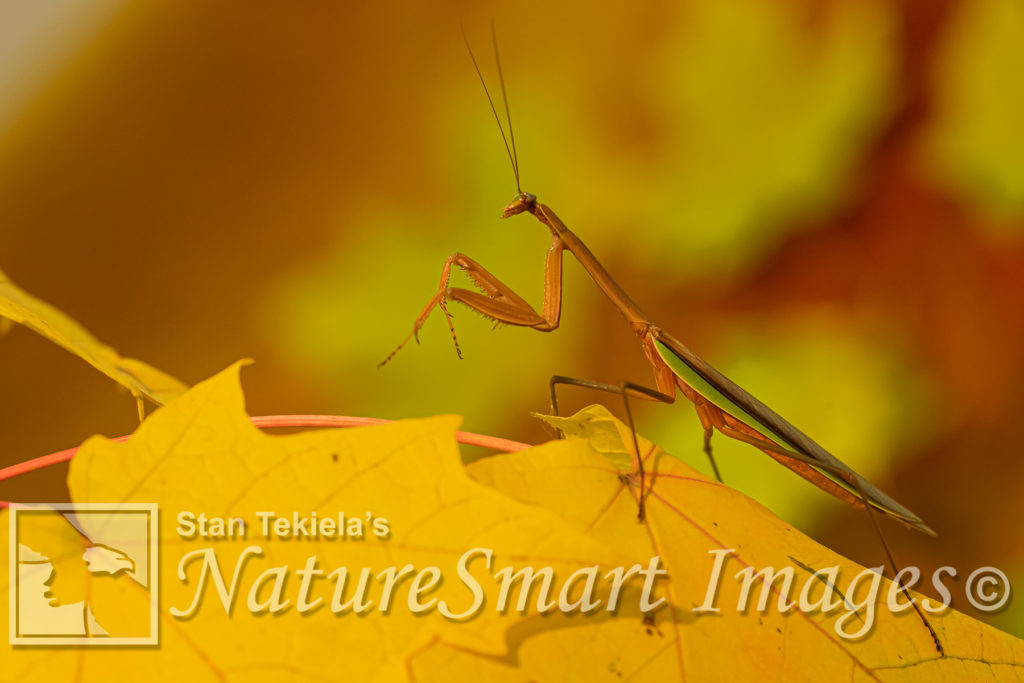
Sometimes when Mantids are walking they make a rocking motion—a repetitive or rhythmic rocking from side to side as they move along. The exact function for this behavior is not well understood. Some believe that this movement allows the Mantid to differentiate objects from the background by their relative motion. Others believe it is a way to move without giving away their presence to prey.
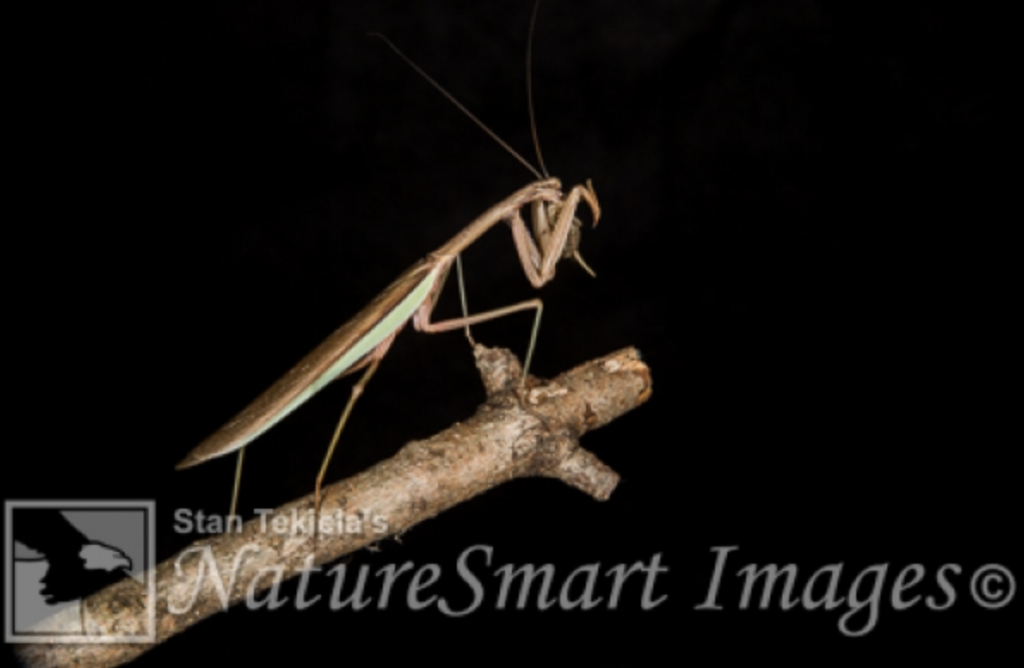
No matter how you slice it, these critters are nothing short of amazing. I am sure if you run across one of these critters in your garden you will be just as enthralled as I am.
If you enjoyed Stan’s post, you may consider one of his amazing nature books: Majestic Eagles; The Lives of Wolves, Coyotes, and Foxes; or Backyard Birds: Welcomed Guests at our Gardens and Feeders.
You can follow Stan on Facebook and Twitter, or contact him via his web page. Stan’s nationally syndicated NatureSmart Column appears in more than 25 cities spanning 5 states (Minnesota, Wisconsin, Michigan, Illinois, and Pennsylvania) and is circulated to more than 750,000 readers.
For more stories about wildlife and nature, sign up for our newsletter now!



Annie Long
Wow, this is sooooo cool. I was just reading Annie Dillard on praying mantis life. These are simply fantastic creatures. I want a copy!